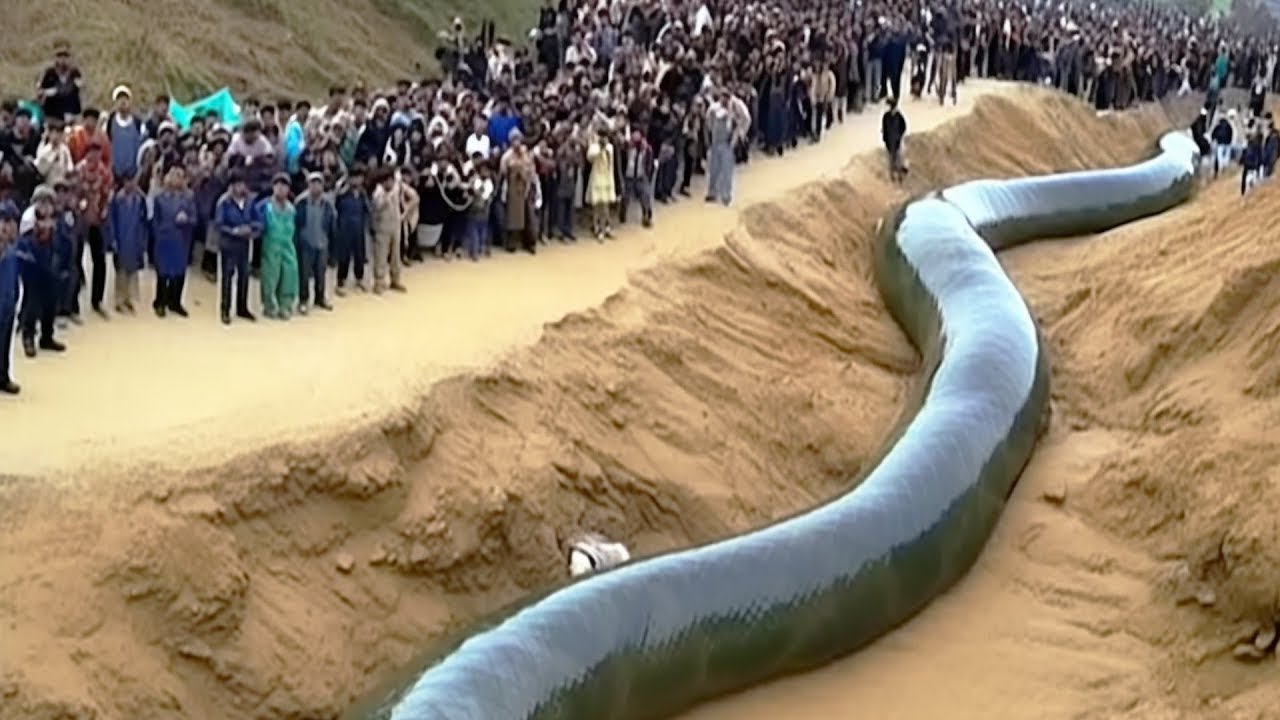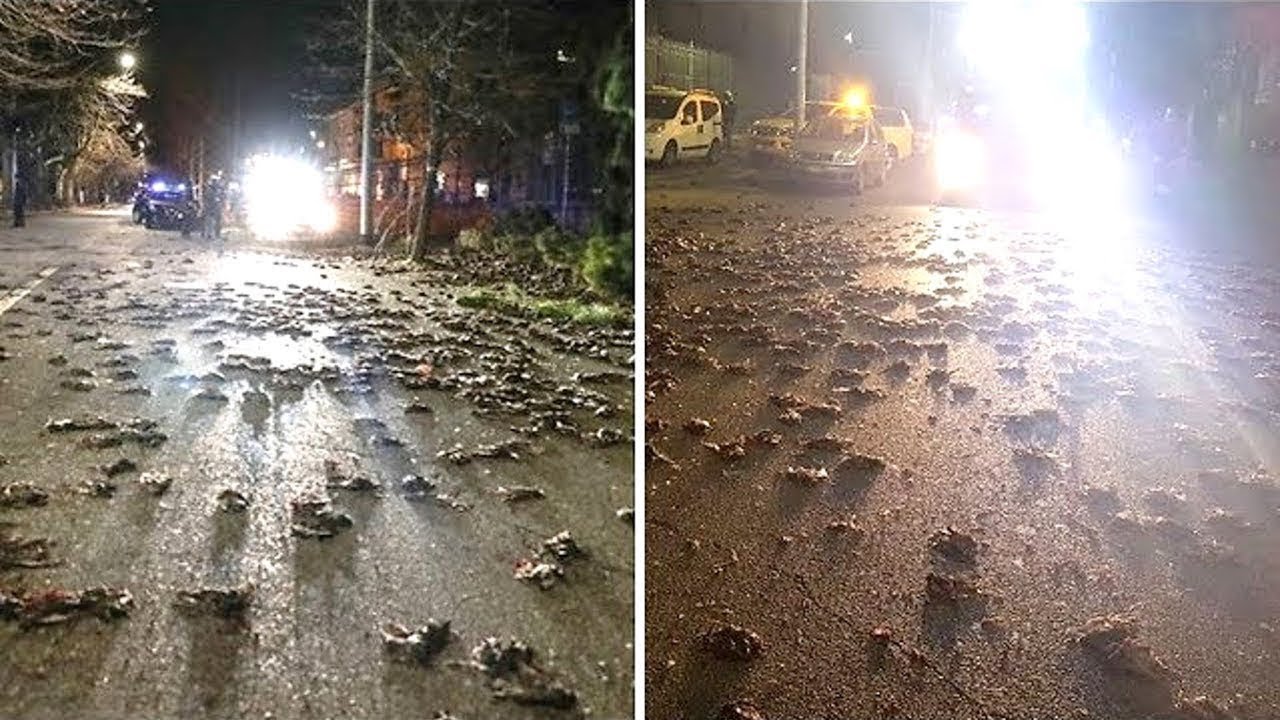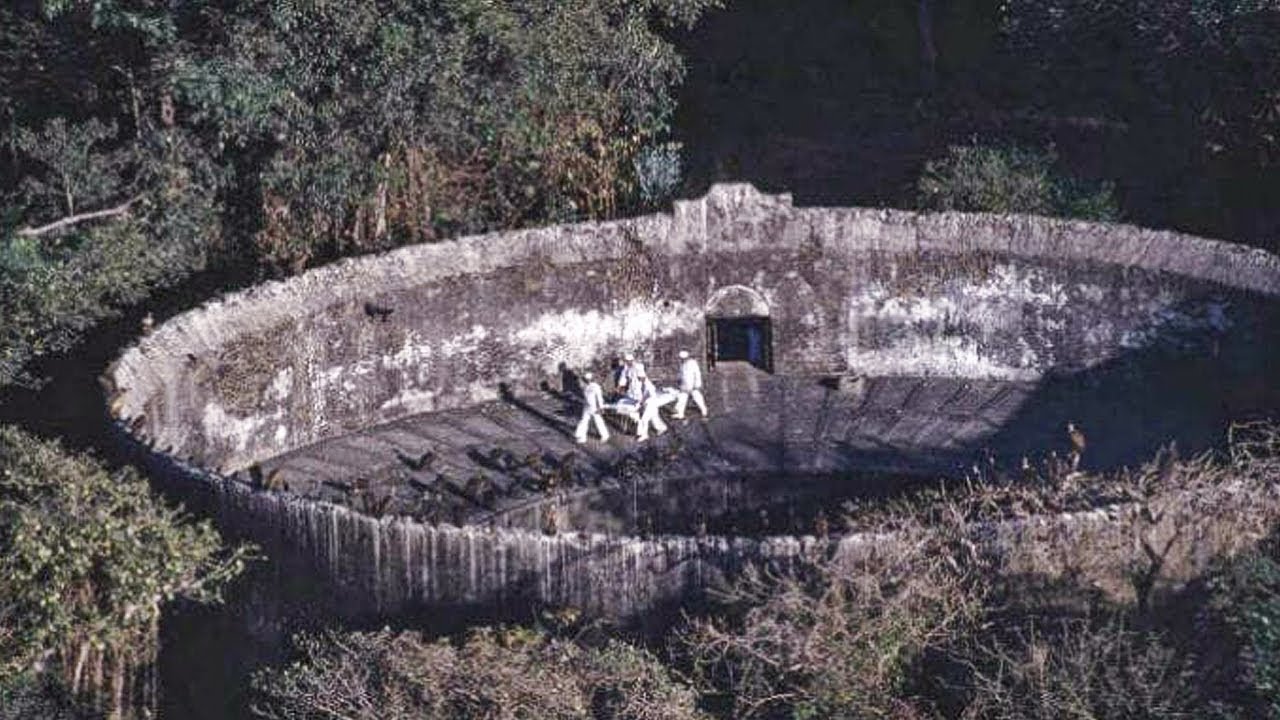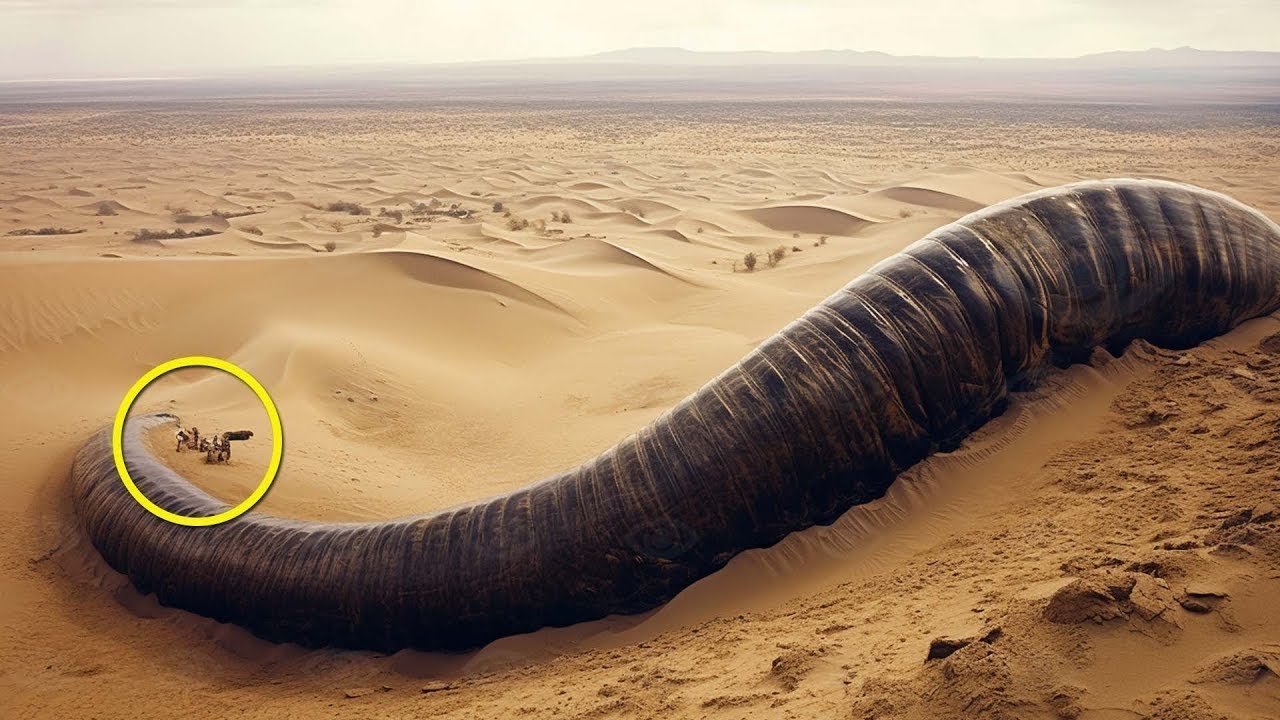- The harsh environment of Ethiopia’s Babile Elephant Sanctuary is characterized by intense competition for resources, particularly water and land, between elephants and people.
- Expanding human settlements and poaching are fragmenting areas where endangered elephants range, while elephants at times destroy community crops in search of food or space.
- This daily struggle for survival is exacerbating conflicts between humans and elephants, with nine community members and six elephants 𝓀𝒾𝓁𝓁ed in violent encounters this year alone.
- To dive into the human-elephant conflicts boiling over in this sanctuary and know how rangers maneuver this tricky reality, Mongabay speaks with the sanctuary’s award-winning chief ranger, Fetiya Ousman.
HARAR, Ethiopia — In the hilly terrain of Babile Elephant Sanctuary in Ethiopia, Fetiya Ousman, a female wildlife ranger, is leading her team on a patrol. Dressed in a jungle-green uniform with a rifle slung over her shoulder, she stops to look at a group of African bush elephants (Loxodonta africana) grazing in the distance.
As the first female ranger of the sanctuary and recent recipient of the International Union for Conservation of Nature’s International Ranger Award for guards dedicated to their job, she’s always happy to see the elephants, she says.
A few minutes later, as they keep patrolling through the sanctuary’s dense acacia woodlands and widespread cacti areas, Fetiya sees brand-new human settlements in the distance and groans.
The harsh and semiarid environment of Babile Elephant Sanctuary is characterized by intense competition for resources, particularly water and land, between elephants and people and their livestock. This daily struggle for survival is exacerbating conflicts between humans and elephants.
“The elephants in Babile are trapped in dire conditions, their habitats ravaged by human encroachment. They endure a relentless struggle to survive in an unforgiving and hostile environment,” Fetiya tells Mongabay.
 Fetiya Ousman with another ranger in Babile Elephant Sanctuary, Ethiopia. Image by Berihun Tadele.
Fetiya Ousman with another ranger in Babile Elephant Sanctuary, Ethiopia. Image by Berihun Tadele.
At times, elephants will go into community fields in search of food or space, and cause significant damage to a poor farmer’s crops too, she says.
The sanctuary, established half a century ago, provides a vital refuge for the last remnant members of Africa’s northeastern-most endangered elephant population. However, today, elephants are confined to small, isolated pockets of land due to destruction and fragmentation of the valleys they roam. Increasing human settlements, expanding agriculture, commercial poaching, political unrest, and lack of governance are all on the list of challenges the sanctuary faces and have led to a drastic decline in the elephant population.
In the past five decades, Babile has experienced a loss of more than half of the species’ population, due primarily to rampant poaching for ivory that’s then smuggled into nearby Somaliland, and to expanding settlements as infrastructure development and land shortages bring people to the region. Today, only an estimated 300 elephants remain in the sanctuary.
Adam Mohammed, the director of the sanctuary, highlights the alarming increase in settlements, including armed groups, resulting in the 𝓀𝒾𝓁𝓁ing of elephants. Tensions between humans and elephants have risen so high over the years that they’ve turned violent on both sides. According to local authorities, nine community members and six elephants were 𝓀𝒾𝓁𝓁ed in violent encounters this year alone. Another five people have been injured by elephants.
“To tackle these challenges, immediate action and collaboration are imperative,” Adam says. “We must strive to bridge the gap between the sanctuary and the local community, ensuring their needs are met while also prioritizing the conservation of elephants and their habitat.”
Despite efforts by the Ethiopian Wildlife Conservation Authority (EWCA), regional officials, and community elders to address the issue, illegal settlements have continued to grow. In the 11 years to 2017, the number of illegal houses in the sanctuary soared from 18,000 to more than 50,000, according to a 2021 study published in the journal Oryx. Of these, some 32,000 houses are in the elephants’ range.
These are the challenges and intricacies Fetiya and her team confront on a daily basis. But her passion to protect elephants, she says, pushes her to continue the job despite the conflicts, inner turmoil and trials she sometimes faces.
Fetiya became a wildlife ranger in 2011 entering a male-dominated profession that meant sacrificing her marriage and facing opposition from her family and members of her community. Twelve years later, she became the chief ranger, leading a team of 59 rangers and bringing more local women into the profession.
“I have no regrets following my heart and going against the odds. I want to witness the impact of my efforts in protecting elephants and changing local attitudes” she says. “It’s the ultimate validation of my choices and beliefs.”
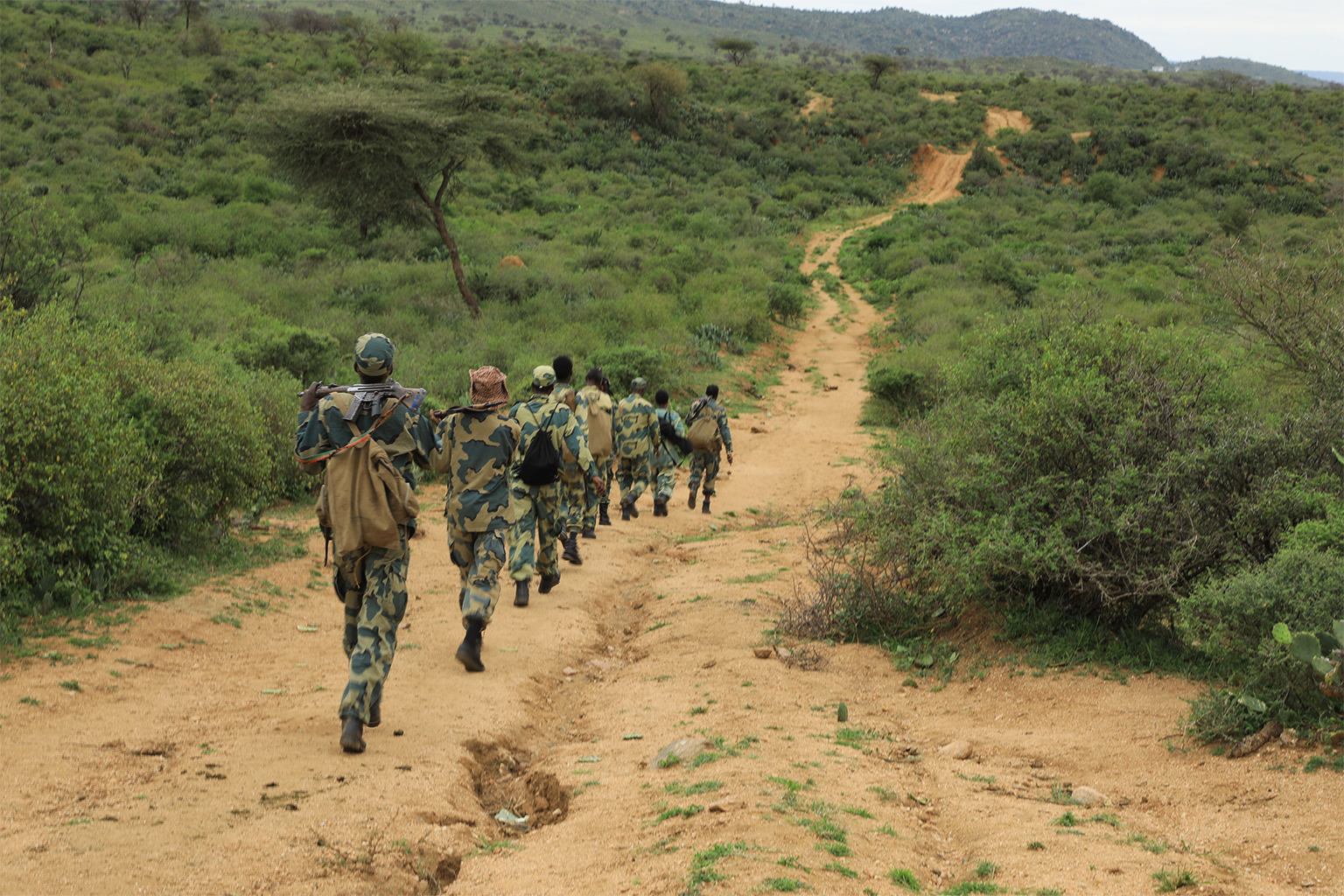 Fetiya Ousman leads her team on a patrol in the hilly terrain of Babile Elephant Sanctuary. Image by Berihun Tadele.
Fetiya Ousman leads her team on a patrol in the hilly terrain of Babile Elephant Sanctuary. Image by Berihun Tadele.
In an exclusive interview, Mongabay spoke with award-winning ranger Fetiya Ousman about how rangers maneuver the daily conflicts between humans and elephants, the at-times tense relationship between local rangers and the communities they police, and what it’s like being the first female ranger at the sanctuary.
This interview has been edited for clarity and length.
Mongabay: What is life like for rural people living near the sanctuary?
Fetiya Ousman: I was 𝐛𝐨𝐫𝐧 and raised in this area, in close proximity to the sanctuary. Growing up, I had the privilege of regularly witnessing and experiencing the wonders of wildlife. Occasionally, these wild animals would venture into our village and consume our crops. Among them, the wild boars were particularly notorious for ravaging my family’s harvest. Our nights were spent anxiously waiting for the elephants, who would often cause more destruction than they consumed. I would hide and observe them as they retreated, accompanied by community members who surveil their fields with torch lights.
Mongabay: Managing the tensions that can arise between humans and wildlife is tricky and has led human rights organizations to accuse some conservation efforts of abuses when trying to protect the latter. How do you lead your team of 59 rangers in preventing conflicts between people and wildlife?
Fetiya Ousman: First, it’s important to know that elephants are not always the ones starting violent conflicts. It’s actually people who go into the elephants’ territory and cause trouble [by poaching, building settlements or revenge 𝓀𝒾𝓁𝓁ing]. When elephants go to drink water, they often come across people who stop them and cause harm. But if they’re left alone, elephants will peacefully go away after they’ve had their drink. Elephants are generally polite and careful animals. They only get aggressive when they’re attacked or approached too closely. It’s sad that sometimes elephants end up 𝓀𝒾𝓁𝓁ing people, but that usually happens when they’re forced to leave their home due to settlement encroachment. In those cases, the community might want revenge and to shoot and 𝓀𝒾𝓁𝓁 the elephant.
When we hear about these incidents, we quickly talk to the leaders of the area and visit the families of the people who died to offer our condolences and support. We say sorry for their loss and try to stop them from seeking revenge by giving them money to help.
Also, when elephants go into the community’s crops and cause damage, the community asks us for help. They know that trying to get the elephants out themselves could be dangerous. Our rangers respond to these calls and guide the elephants out safely without causing more damage. If farmers lose a lot of crops, we work with the leaders to give them help and pay them for what they lost. In places where conflicts happen a lot, we also give advice on growing crops that elephants are less likely to eat.
But it’s important to know that if someone is found responsible for 𝓀𝒾𝓁𝓁ing an elephant, we will make sure they face the law without any special treatment.
 An elephant 𝓀𝒾𝓁𝓁ed by community members following conflict in the area. Image courtesy of Babile Elephant Sanctuary.
An elephant 𝓀𝒾𝓁𝓁ed by community members following conflict in the area. Image courtesy of Babile Elephant Sanctuary.
Mongabay: But how do you handle incidents related to illegal poaching and settlements, specifically, which are the main threats to the species?
Fetiya Ousman: Our approach is to prioritize collaboration and community involvement. Instead of immediately taking action, we work together with the local community members and local government leaders. We believe in informing them about the issue and seeking their assistance.
We explore various options to help the community identify the individuals responsible for these illegal activities. We rely on the support of rangers recruited from the community, known as community scouts, as well as local tribal leaders, to fulfill their roles in this regard. This collaborative effort often puts pressure on the wrongdoers and helps us swiftly identify the culprits, enabling us to take the necessary steps to address the situation.
Through this approach, we have observed that raising community awareness about the illegality of these acts has proven to be an effective deterrent. It not only reduces the occurrence of such incidents but also facilitates the prompt identification of criminals, allowing us to take appropriate action.
Mongabay: Are you ever armed when you go on patrols?
Fetiya Ousman: The role of a ranger is not vastly different from that of a regular military position. While there are similarities between the two, being a ranger involves leading an armed force with a specific focus on law enforcement. This means that a great deal of caution and preparation is required in our line of work. We prioritize identifying areas in advance and engaging in thorough discussions to ensure that our operations are carried out without any unnecessary loss of life or financial burden.
To support our team in their work, we ensure they have the appropriate vehicles, sufficient armor, GPS devices, binoculars, and other essential materials. These tools are crucial for their safety and effectiveness in the field.
 “Instead of immediately taking action, we work together with the local community members and local government leaders,” says Fetiya. Image by Berihun Tadele.
“Instead of immediately taking action, we work together with the local community members and local government leaders,” says Fetiya. Image by Berihun Tadele.
Mongabay: And are these people illegally in the sanctuary sometimes armed too?
Fetiya Ousman: Yes, to make matters worse, these individuals are armed, which leads to serious conflicts when we, as rangers, try to enforce the law. They have better illegal equipment and weapons than what the government has provided us, making it difficult for us to control and remove them.
The illegal settlement within the sanctuary not only destroys the area but also drives away elephants and other wild animals. This, in turn, contributes to the increase in illegal hunting and trafficking of wildlife. These poachers pose a significant challenge to wildlife conservation efforts.
Overall, the illegal settlements, deforestation, charcoal production, expansion of agricultural activities, and the ongoing and complex issues of wildlife hunting and trafficking are constant challenges that threaten the existence of the sanctuary.
Mongabay: Why are illegal settlements expanding in the sanctuary in the first place?
Fetiya Ousman: One of the main problems at the sanctuary is its security process. The sanctuary’s boundary spans two regional states, Oromia and Somali. The communities living near the sanctuary in both regions lack awareness about its importance, leading them to encroach upon the protected area and engage in various activities.
The community groups that have settled illegally within the sanctuary are the root cause of all the problems. These groups allow their cattle to graze within the sanctuary, transforming the designated area for wild animals into a habitat for domestic animals. This gradual encroachment also results in the destruction of the forest within the sanctuary for agricultural purposes. Naturally, elephants prefer to avoid areas where humans and other animals have encroached upon, even if it suits their natural habitat. As a result, they are forced to move away from areas where they come into contact with humans.
It’s disheartening to see that many of these people who illegally enter the sanctuary come from neighboring kebeles [districts] where they already have homes and have legal government structures. So, this is happening under the eyes of the authorities. Unfortunately, no authority is taking immediate action to remove them if they commit illegal acts and destroy a legally established sanctuary.
 Illegal settlements in the sanctuary. Image courtesy of Babile Elephant Sanctuary.
Illegal settlements in the sanctuary. Image courtesy of Babile Elephant Sanctuary.
Mongabay: What predicament does the elephant population find itself in?
Fetiya Ousman: The Babile elephants are currently facing a critical situation. While we are delighted to receive international recognition through an award in the name of the Babile Elephant Sanctuary, we remain deeply concerned about the well-being of the elephants. They have been forced out of their former comfort zone and are now confined to a restricted rocky area. Visitors may catch a glimpse of an elephant amidst the sparse vegetation.
This unfortunate situation has brought the elephants closer to human settlements, leading to a significant increase in human-elephant conflicts. It is disheartening to acknowledge that a considerable portion of the sanctuary’s territory has been encroached upon by illegal occupants.
In the most recent census, conducted in 2012, the elephant population was estimated to be between 280 and 300 individuals. It is likely that the current number is even higher. However, it is important to note that the elephants are no longer congregated in large herds as they once were. Instead, they have resorted to forming smaller groups as a means of self-protection.
Mongabay: At times, rangers, who are also members of the community, can be seen as a betrayer or source of distrust by getting people to snitch against each other about illegal activity. Are you well-liked by locals or are you seen as someone who gets people into trouble and stops their access to land, resources and money?
Fetiya Ousman: In general, most people in the community accept and appreciate our work as rangers. But there are some individuals who criticize me because of my gender, [Muslim] religion, and culture. They believe that the resources we protect belong to them and sometimes they don’t understand or purposely cause harm. They might know that what they’re doing is wrong, but they don’t specifically hate us.
However, I don’t expect to be treated kindly by those involved in hunting and other serious crimes. They know that I wouldn’t support what they’re doing and I refuse to have anything to do with them. On the other hand, I believe that a big part of the community sees me in a positive way. They show this by actively participating in the awareness campaigns I organize. For example, when I became a girl scout leader, the 𝘤𝘩𝘪𝘭𝘥ren from the community happily joined, which makes me think they have a good opinion of me.
Overall, even though there are some people who criticize and oppose our work, I feel encouraged by the support and positive outlook of many in the community.
 Fetiya say that a big part of the community sees her in a positive way. “They show this by actively participating in the awareness campaigns I organize.” Image by Berihun Tadele.
Fetiya say that a big part of the community sees her in a positive way. “They show this by actively participating in the awareness campaigns I organize.” Image by Berihun Tadele.
Mongabay: Do you ever struggle with balancing your loyalty to local communities and your commitment to protecting elephants?
Fetiya Ousman: Yes, I have indeed experienced this struggle. It occurred in 2021, a decade after I started working in this field.
I was part of a patrol team consisting of 10 shelter rangers and 10 security personnel. Among my companions, I was the only woman on duty. While we were carrying out our work, we unexpectedly encountered a group of outlaws who were attempting to expand agricultural land.
A shootout ensued, and we found ourselves facing adversaries armed with modern weapons that overwhelmed us and the defense personnel. During the battle, two of our rangers were wounded, and tragically, one lost his life. Additionally, two members of the defense team sustained injuries. It was a challenging and arduous task to evacuate our injured colleagues and retrieve the body of our fallen comrade. That day, I felt a profound sense of sorrow and despair unlike anything I had experienced before.
I questioned why we were risking our lives to safeguard the community’s property when the community itself turned against us. This treatment implied that the community had turned against the very sanctuary we were working so hard to maintain. I wondered how long the government would tolerate such individuals who perpetrate such acts of violence and abuse. In that moment, I lost hope and contemplated quitting my work to return to my family. However, gradually, as I laid my eyes on the elephants, my strength and determination were reignited.
Mongabay: What’s it like to work in an underresourced sanctuary? What struggles do you come across?
Fetiya Ousman: Undoubtedly, the budget allocated to the sanctuary is meager. The compensation provided to rangers in our country is disproportionately low considering the immense responsibilities we undertake. For most of us, our love for the sanctuary and the hope for a better future are the driving forces that keep us going, despite the inadequate wages and benefits we receive.
As we are all aware, the government budget is severely limited. Unlike other workers who have the luxury of working in a fixed location or an office, our work as rangers in the sanctuary is dynamic and requires us to navigate through various challenges. Often, we embark on long journeys, facing difficulties in even covering our costs with our basic allowances.
The resources at our disposal are insufficient to support the complex nature of law enforcement work in the sanctuary. Outdated and incomplete armories, inadequate clothing, tents, binoculars, GPS devices, backpacks, and water bottles hinder our ability to effectively carry out control and protection duties. Another significant challenge we encounter is the lack of suitable vehicles. Even if we have access to a vehicle, there is often a shortage of fuel or budgetary constraints. Furthermore, in the event of a ranger falling ill during duty, obtaining immediate assistance becomes a daunting task.
 Settlers with their belongings and their animals in the sanctuary. Image courtesy of Babile Elephant Sanctuary.
Settlers with their belongings and their animals in the sanctuary. Image courtesy of Babile Elephant Sanctuary.
Mongabay: Given the challenges facing Babile Elephant Sanctuary, what do you believe the solutions are?
Fetiya Ousman: Every community living [near the sanctuary] has a stake in the survival of the sanctuary.
I believe that the solution to this problem lies in the redistribution of land in a way that meets the needs of both the communities and the elephants. The authority office should advise on the solution proposed by the international consultants to evict the settlers immediately and redistribute the land in a better way.
Once the illegal settlers have been removed, the sanctuary can be protected more effectively, and the community can be educated about the importance of conservation.
I believe that the solution [also] lies in the implementation of law and order. The government at all levels must enforce the laws that are already in place. In particular, the leaders of both the Somali and Oromia regions must take action to evict the illegal settlers who have encroached on the sanctuary.
However, the government’s response has been disappointingly slow. As someone who has dedicated their entire life to this cause, it is truly heartbreaking. If the silence persists, I can say with certainty that in the near future, there will be no elephants left in the Babile sanctuary.
[This] would be a tragedy for Ethiopia, and the international community would hold us accountable. The federal government must intervene in this matter and coordinate with both states to ensure that the settlers are removed from the sanctuary.
Mongabay: Do you believe all locals will eventually support these conservation efforts?
Fetiya Ousman: We’ve been doing this through awareness campaigns. But it’s been challenging to change their mindset and get them to understand that the sanctuary is a national resource that should be taken care of. To tackle this, we’ve created different groups and tried to create job opportunities for the community while still protecting the sanctuary. But there are still some things we need to improve in how we strengthen these practices.
When we try to stop [people doing illegal] activities, we also try to talk to them and find solutions.
First, it’s important to acknowledge that these people are breaking the law. As law enforcement, we face challenges when we try to talk to them directly because they often run away or even try to attack us. But since they’re part of the community, we try to talk to them through people who are not involved in illegal activities. It’s important to know that they might not come to us willingly because of what they’re doing. For example, someone who has illegally 𝓀𝒾𝓁𝓁ed an elephant won’t want to talk to us. They’re avoiding us because they know what they did was wrong. We use different ways to teach them about how their actions hurt society and why what they did was bad.
We work with the police to make sure that people who commit crimes face the consequences. But we also want to educate others so they learn from these incidents. Unfortunately, conflicts between elephants and people have been happening more often, especially around water sources.
 Her passion to protect elephants, Fetiya says, pushes her to continue the job despite the conflicts, inner turmoil and trials she sometimes faces. Image courtesy of Babile Elephant Sanctuary.
Her passion to protect elephants, Fetiya says, pushes her to continue the job despite the conflicts, inner turmoil and trials she sometimes faces. Image courtesy of Babile Elephant Sanctuary.
Mongabay: Some conservationists who criticize fortress conservation (where communities are often removed to conserve protected areas) say communities should instead reside alongside important ecosystems, learn how to live sustainably or participate in conservation efforts. In the case of the Babile sanctuary, do you think communities can live in the sanctuary harmoniously with elephants or perhaps even aid in elephant conservation?
Fetiya Ousman: In our situation, it’s not possible to have protected areas where people live, farm, and raise cattle. In those [other regions], the local community is important, but here they actually contribute to destroying our natural resources. This shows that there’s a lack of awareness and challenges we need to address.
Our country has the potential to not only copy what others have done but also do even better. The government needs to put in a lot of effort and commitment. They can include conservation areas in their plans for overall development, so these areas become sources of jobs and money for the local community. It’s also important to let the community actively take part and be involved in these conservation areas, so they feel like they own and take care of them.
The most important thing is to change people’s way of thinking. They need to understand that they don’t just live alongside wild animals in the sanctuary, but that these animals are essential for their own existence and income, just like their farms and livestock. Once the community understands this, we can move farms and livestock to different areas and keep the sanctuary safe while still benefiting from it.
This change needs a comprehensive approach. We have to educate people, run campaigns to raise awareness, and give them other ways to make a living. All of these things together can make initiatives like this successful. In the end, by having a good relationship between communities and wildlife, we can create a future where both can thrive.
Mongabay: Could you shed some light on what personal challenges you faced as the first female ranger at the sanctuary?
Fetiya Ousman: When I first started, rangers didn’t wear uniforms. It was mostly men in the field, and they wore regular clothes while working. But after we finished ranger training, we were told that we had to wear uniforms. Unfortunately, the uniform design didn’t consider women[’s clothing] or our local culture. According to the new rules, all rangers had to wear pants. That’s when I faced challenges. Before this, people thought being a ranger was like being in the military. But once I started and learned more, I didn’t mind it.
Personally, I don’t have a problem wearing pants for work. But my family and the community felt sorry for me when they saw me wearing pants outside of work because it goes against our Islamic customs. Many people, including my family, pressured me to quit my job and go back home.
My husband was in university, and we talked about this later on. He thought it was his responsibility to take care of me, and he didn’t want me to face criticism from him, my family, or the community for doing something that was seen as inappropriate for work. But I tried to explain to him that I really enjoyed my job and that wearing pants was only for work. Unfortunately, he didn’t understand. Another time, he brought it up again and asked me to make a decision. I told him that I hadn’t changed my mind and that I wouldn’t quit my job because of wearing pants. Eventually, we decided to separate. We respected each other’s opinions, and even though we didn’t legally get divorced, we’ve been living apart. Now, I’m raising our 10-year-old son on my own.
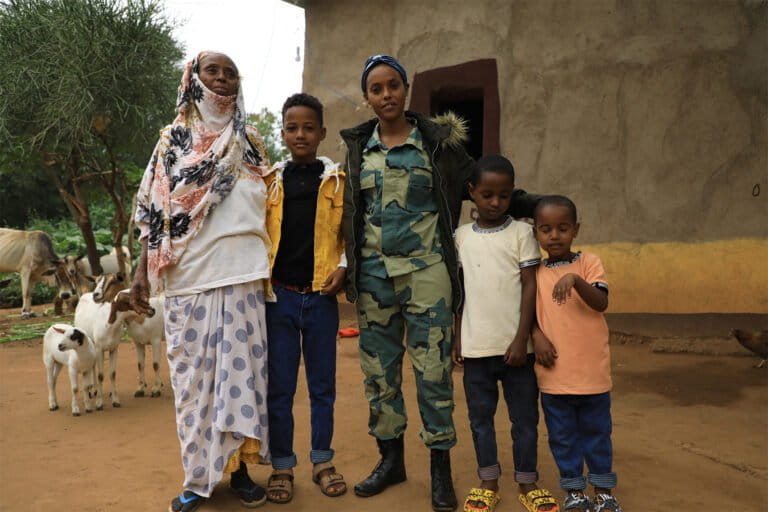 Fetiya Ousman with members of the community. Image by Berihun Tadele.
Fetiya Ousman with members of the community. Image by Berihun Tadele.
Mongabay: I heard that you are no longer the sole female ranger at this sanctuary and that other female rangers have followed you into this role. How did this happen?
Fetiya Ousman: The government supports women’s participation in different fields, and I have followed that path too. It was a bit difficult in the beginning, but I managed to bring three more women into the ranger team. However, there are still more men than women in ranger work. Out of 56 rangers, only four are women. It may not seem like a big achievement, but for me, the most important thing is breaking the stereotype that women can’t or shouldn’t do this job while wearing pants.
All the women rangers here do our jobs just as well as the men, even in tough conditions. There’s no difference in our performance just because we’re women. We show that women can excel in this field too, and I hope to inspire other women to follow their passions and challenge what society expects from them.
Mongabay: How have the local community members reacted to this? Has this affected the way they see rangers?
Fetiya Ousman: The community has different opinions about us, female rangers. People used to criticize our clothing choices, but that’s changing now. Nobody no longer tries to put us down or embarrass us because of what we wear. I proudly wear my ranger uniform when I go to schools or community gatherings to raise awareness. The community members appreciate my suggestions, and their response is positive. They treat the other female rangers with the same respect.
We haven’t done anything wrong. We’re here to protect their symbol, the elephants. We haven’t abandoned our beliefs, harmed the community, stolen from anyone, or caused any specific damage. So why would they be against us? In fact, they often show us even more respect because we have chosen to serve the society we come from.
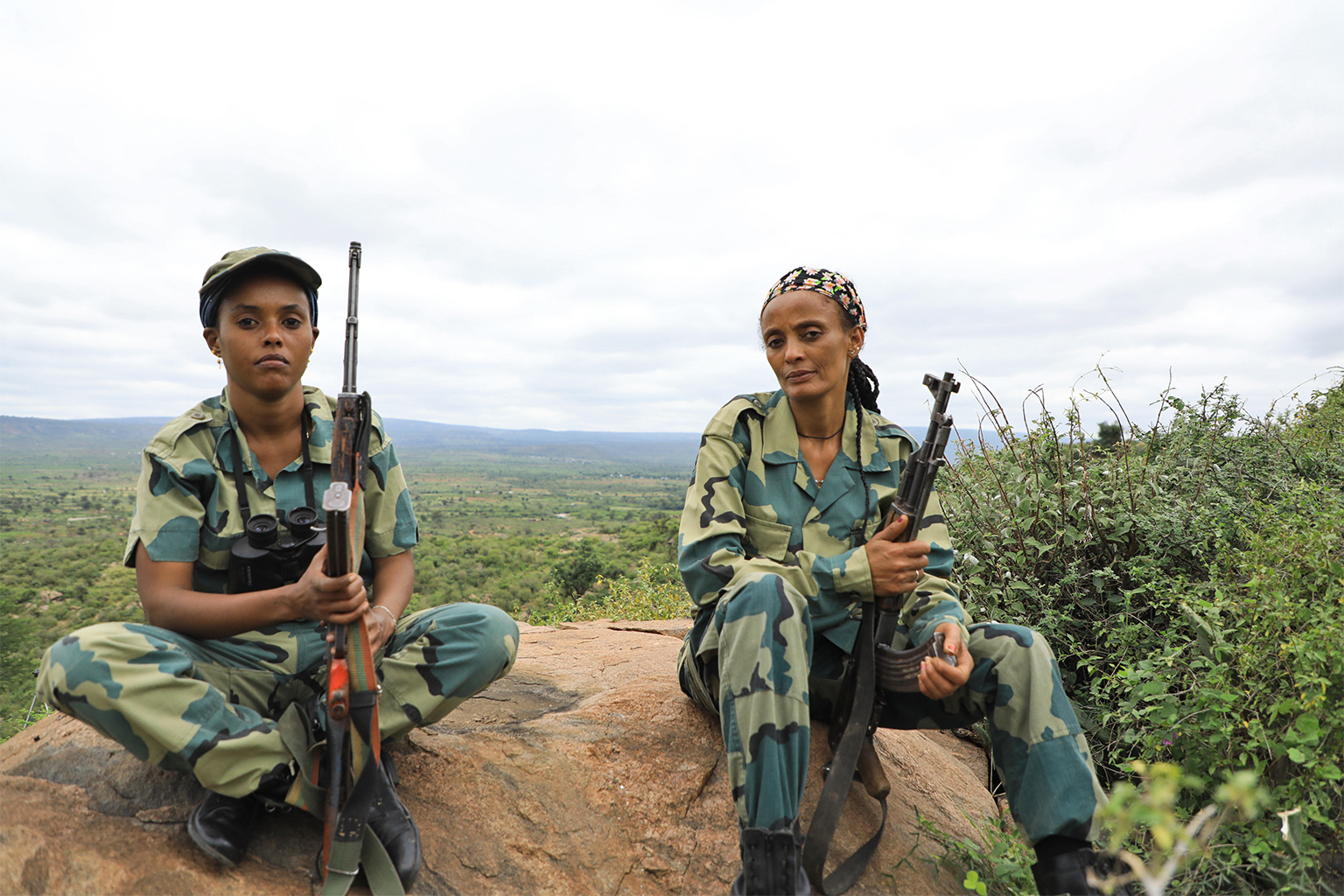 Fetiya with another female ranger in the sanctuary. Image by Berihun Tadele.
Fetiya with another female ranger in the sanctuary. Image by Berihun Tadele.
Mongabay: What is it that spurred your passion for wanting to protect this species in the first place?
Fetiya Ousman: Coming face to face with an elephant is a truly captivating experience. Their unique nature never fails to fascinate. Once you truly understand their character, you develop an unyielding admiration for these magnificent creatures. Witnessing the 𝐛𝐢𝐫𝐭𝐡 of 𝑏𝑎𝑏𝑦 elephants, in particular, fills me with an indescribable joy. Simply observing them brings endless delight. Beyond the work and the salary, it is this deep love for wild animals that has been ingrained in me since 𝘤𝘩𝘪𝘭𝘥hood. It is this love that has motivated me to pursue a position in this field.
Mongabay: You’ve dedicated 12 years of your life to being a ranger so far. What reflections do you have on your career?
Fetiya Ousman: I strongly believe that working as a ranger is incredibly fulfilling. However, it’s important not to solely evaluate it in terms of monetary gain. If we focus solely on salary and benefits, there may not be much to highlight. Yet, the sheer joy of conserving nature should be reason enough to pursue this path. Personally, spending time with such magnificent creatures as elephants on a daily basis, while striving to protect and pass on their legacy to future generations, creates a profound sense of purpose.
My primary message to people is to nurture a love for nature. When individuals genuinely care for the environment, they naturally become its protectors.
My current colleagues joined this profession driven by the same passion. When others approach this job with a similar mindset, we assure them that being a ranger is indeed highly rewarding, with its own intrinsic value.

